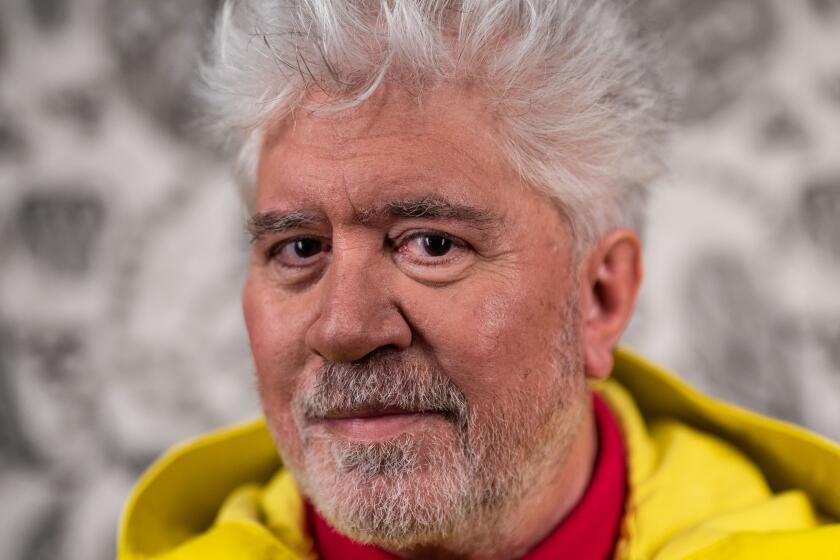The mind’s the limit
American Transcendentalism
A History
Philip F. Gura
Hill & Wang: 366 pp., $27.50
The Tao of Emerson The Wisdom of the Tao Te Ching as Found in the Words of Ralph Waldo Emerson
Edited by Richard Grossman Modern Library: 180 pp., $24.95
--
Almost anyone who muddled their way through high school has heard of the Transcendentalists. Plenty of people could even name some of them: Ralph Waldo Emerson, Henry David Thoreau or even, perhaps, Walt Whitman. Some of us might even own a dog-eared paperback of “Walden.” But only a few of us could tell you what Transcendentalism actually means.
We shouldn’t feel too bad about this, it turns out, for even in its heyday, from the 1830s through the 1850s, the average American was equally befuddled by the term. “When a speaker talked so that his audience didn’t understand him, and when he said what he didn’t understand himself -- that was transcendentalism,” as one newspaper reporter joked in 1853.
Philip Gura, a professor of American literature and culture at the University of North Carolina at Chapel Hill, sets out to change all that. He has succeeded grandly. In “American Transcendentalism: A History,” Gura untangles this complex web of ideas and characters and weaves them into a clear, coherent and compelling tale of America’s first, and maybe greatest, major intellectual movement.
Perhaps the easiest way into this story for us 21st century dwellers is to compare it to a more familiar period of countercultural revolt: the 1960s (technically, the late 1950s through the early 1970s). The similarities are not coincidental. Thousands of disaffected baby boomers found inspiration and vindication in Margaret Fuller’s feminism, Emerson’s mystical essay “The Over-Soul” and Thoreau’s early environmentalism.
Like in the 1960s, a delicious sense of “Newness,” as one contemporary called it, pervaded the 1830s. The average age of the population was 16 in 1830, the result of a baby boom following the War of 1812, and the number of colleges in the United States had more than quintupled, from nine to nearly 50. The Industrial Revolution was making life more comfortable but also more materialistic and market-driven. New ideas were drifting in from Europe, where scientists were demystifying the natural world in fields as diverse as physics and physiology, historians and linguists were upending the notion that the Bible came directly from God’s mouth, and the Romantic philosophers and poets were exploring the power and possibilities of human consciousness. Nowhere was this more true than in Boston, the proud “Athens of America.”
The movement’s original spark was as much spiritual as it was intellectual. Nearly all the key figures began as restless young Unitarians, searching for an approach to religion that could accommodate both rational thought and deep emotion. Inspired by the European philosophers, they began developing a revolutionary new understanding of human consciousness.
In contrast to traditional Christian preaching, which saw a deep divide between a superior supernatural God and a powerless and profane humankind that could be bridged only by grace, works or miracles, the Transcendentalists insisted that divine energy coursed throughout the natural world, and especially the human heart. Some went further, insisting that God, nature and mankind -- the whole universe -- was simply one spiritual entity. (Where traditional Christians found salvation in “atonement,” went a quip, Transcendentalists found salvation in “at-one-ment.”) We perceive ourselves as alienated from God, truth, happiness and beauty, they argued, only because our minds have been fettered by prejudice, apathy and ignorance and distracted by the false idols of religious dogma, material ambition and social conformity.
In the fall of 1836, four of Boston’s most iconoclastic Unitarian ministers, including George Ripley and the newly “self-defrocked” Ralph Waldo Emerson, began meeting to debate these ideas. They dubbed themselves “The Transcendental Club” because they aimed to transcend these fetters and false idols through “self-culture” -- not unlike the “consciousness-raising” of a later generation. They quickly gained members and momentum, led by Emerson, who delivered a seminal series of lectures on the subject, including his legendary Harvard Divinity School Address -- “our intellectual Declaration of Independence,” as Oliver Wendell Holmes Sr. described it.
“They called themselves ‘the club of the like-minded,’ ” as one of them joked (“I suppose because no two of us thought alike”). What they shared was an independent habit of mind, characterized by a thirst for provocative new ideas, a fascination with the way the mind works, a determination to throw off artificial constraints and a belief that strong intuitive feeling brings us closer to truth than does the observation of external facts. The only thing they would not tolerate was intolerance.
The implications of these ideas were as secular as they were spiritual. Transcendentalism was a fundamentally democratic and egalitarian impulse, as Ripley observed, founded upon “the assertion of the high powers, dignity, and integrity of the soul; its absolute independence and right to interpret the meaning of life, untrammeled by tradition and conventions.” Or, in Emerson’s famous saying, “whoso would be a man, must be a nonconformist.”
--
BETWEEN 1840 and 1842, the movement experienced its own version of 1967, that magical moment when the avant-garde fringe coalesced into a genuine counterculture, when a new society, even a new kind of human being, seemed close at hand, and when the rest of the world -- that is, the mainstream press -- began to pay attention. Fuller established the Dial as the group’s unofficial house organ, Emerson published his famous “Essays” and Ripley founded Brook Farm, a commune outside Boston. “Disgusted with the vulgarity of a commercial aristocracy, they become radicals; disgusted with the materialistic working of ‘rational religion, they become mystics,’ ” as Fuller put it.
But mystics and social reformers are uneasy bedfellows. In the wake of the economic depression of the early 1840s, many Transcendentalists came to believe, as Gura writes, that Emerson’s model of “individual self-improvement could not abolish inequality nor restore workers’ rights, and it bore no relation to the whole-scale changes to the social structure that the times demanded.” Emerson, for his part, found limited hope in the myriad schemes to uplift the lives of downtrodden women, children, workers, prisoners, paupers, the ill and the insane.
By the 1850s, however, all other humanitarian reforms and philosophical disagreements were swept aside by the mounting crisis over slavery. Much like the Vietnam War protests a century later, even arch-individualists such as Emerson found themselves drawn into the battle against slavery. Many radical social reformers were transformed into revolutionaries, dropping their pacifist principles in the face of this ultimate evil.
A coterie of Transcendentalists gave financial backing to John Brown’s attempted violent slave uprising at Harpers Ferry, in their belief, Gura writes, “that men held against their will have a natural right to kill everyone who seeks to prevent their liberty, and that it was a natural duty for freemen to do for the enslaved all that they have a right to do for themselves.” By the time Brown was hanged for murder and treason, many of his Transcendental advocates had fled the country to avoid arrest.
The abolition of slavery was, undoubtedly, the greatest spiritual and social reform of the century. But it came at a high price. After the trauma and cynicism of fratricidal war, many Americans lost faith in the possibilities of major social change. Many of the social radicals had died or drifted away, leaving Emerson as the last, great figurehead of the movement. By the Gilded Age, Gura argues forcefully, Emerson’s individualist vision had become the rationale for the self-indulgent and self-involved ethos of marketplace capitalism and laissez-faire politics. Transcendentalism seemed to teach people how to live well in society rather than how to resist or change it.
“The Tao of Emerson,” edited by Richard Grossman, adds fuel to Gura’s argument. Grossman has matched brief passages from Emerson’s writings to the 81 verses that make up the “Tao Te Ching,” the mystical and philosophical Chinese text written by Lao Tse in the 6th century BC. Both Emerson and Lao Tse, Grossman says, “assure that there is a place in the world for humility, yieldingness, gentleness, and serenity” -- the path to personal happiness, perhaps, but hardly the way to a new world.
Both of these are books about, and for, people who take ideas very seriously. “The Tao of Emerson,” like all collections of aphorisms, can be read as deeply or as superficially as you wish. “American Transcendentalism,” brilliant as it is, will not be easy or particularly enjoyable for the casual reader. But students, scholars and those who are thrilled by the intellectual chase will be grateful to Gura for many years to come.
More to Read
Sign up for our Book Club newsletter
Get the latest news, events and more from the Los Angeles Times Book Club, and help us get L.A. reading and talking.
You may occasionally receive promotional content from the Los Angeles Times.








